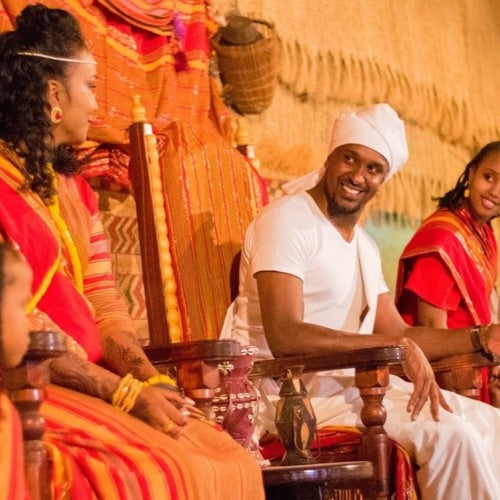It is crystal clear that across the African continent, traditional weddings are waning in the wake of modern culture that is being embraced, nevertheless, there are still some parts retaining the glory of their culture by making traditional weddings chief priority over any imported culture.
Djibouti is a small African country reputed for its stunning landscapes. Formally called the Republic of Djibouti boasts in its cultural diversity due to the nation’s Red Sea location at crossroads of trade and commerce. This however, did bring about the influx of different ethnicities, most especially the French and Arabs. Little wonder that French is the official language of the country that has two major ethnic groups; the Somalis and Afar.
When it comes to traditional wedding in this ‘Horn of Africa’ nation, repping a good sense of fashion with assorted adornment of the body with jewelry is a must.
In Djibouti, a veil of gold cannot hide the beauty of an Afar sultan’s daughter. Even among families of modest means, traditional African marriages can be elaborate celebrations that last for days.

It is noteworthy that the Djiboutian attire reflects the region's hot and arid climate. Also, the clothing styles in Djibouti plays a crucial role in inferring the root of the wearer. French people in the country typically wear casual shorts, whereas indigenous groups sport traditional trousers or a sarong-like futa or macawus for males. It could also be a modest, long dresses or skirts layered with a colorful shalma for the females. The men of the country can be habitually seen wearing white clothes, while the women always don themselves in brightly colored dress.
At Djiboutian traditional wedding, women wear the dirac, which is a long, light, diaphanous voile dress made of cotton or polyester that is often worn over a full-length half-slip and a bra. Also, the women might tend to sport head-scarves referred to as shash and usually cover their upper body with a shawl known as garbasaar.
For the Muslim faithfuls in the country, traditional Arabian garb, such as the male jellabiya and the female jilbāb is usually worn. This attire is not complete for the women without adorning themselves with specialized jewelry and head-dresses similar to those worn by the Berber tribes of the Maghreb.
Interestingly, most Djiboutis are Somalis, and with the rest being Afar, the two groups are very similar in terms of language and culture so that there is a particular traditional style instead of several.
_______________________________________________________________________
Read about:
The History Of African Ankara Fabric Of Becoming A Western Wear
_______________________________________________________________________
The most common traditional dress is a single-strapped outfit that both Afar and Somali women wear. Basically, Somali women in antiquity wore it in white or red, but the today’s Somali women wear it in red and orange. Afar women today seem to wear it in red and black, although, sometimes, some women tend to wear a red and black skirt, instead with a white, silky tunic.

Djiboutian traditional wedding styles can just be a display of Afar garb. This is always the case when the diraac, which is a popular attire for the women is worn down to the silver earrings with bells, which is rarely worn by modern-day Somalis, but was widespread in pre-colonial Somalia.
In furtherance, both Somali and Afar men of Djibouti dress alike. They wear a sarong, usually white or plaid. Majorly, they wear white robes with sarong for their traditional wedding, but that style seems to be replaced with a long scarf in recent time. To enhance their beauty, the both cultures are identified with the men growing their hair until it was about chin length and either covered it in clarified ghee to condition it or wore the typical Cushitic style. Today, Afar men in Djibouti sometimes still wear their hair long and conditioned.






















Laissez un commentaire